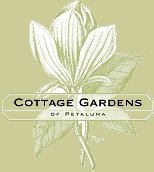
Cherries
Growing Cherries Successfully
Planting: Dig hole at least one foot greater in diameter than the total spread of roots the depth of the longest root. • Fill in lower 2 inches of hole with mixture of 50% native soil and a 50% mix of Soil Booster and 1-2 cups of Earthworm Castings . Press this mixture down firmly. Create a mound in the center of the hole with the soil mixture. Set tree upright in hole with stem in center. • Spread out roots as evenly as possible over the mound of soil and back-fill mixture around all roots. Fill in hole completely and add 1 cup of fertilizer - we love E.B. Stone All Purpose Plant Food or E.B. Stone Citrus and Fruit Tree Food . • Make a basin for holding water by building a circular ridge around the diameter of the hole and fill slowly with water. The water will settle the soil around the roots. • The graft should be positioned about 2 inches above ground level, facing north.
Watering: Water when the soil 6 inches below the surface is just barely moist. • Apply enough water to wet the soil 3 to 4 feet deep. • Mature trees will require less watering, but should still get regular water during summer.
Feeding: Feed three to four times during the growing season with a balanced fertilizer (16-16-16) such as E.B. Stone All Purpose Plant Food or E.B. Stone Citrus and Fruit Tree Food . • Add 1 cup of fertilizer at time of planting (See fertilizer for details). • Avoid fertilizers too high in nitrogen as they will stimulate leafy growth at the expense of fruit production. • It is not necessary to fertilize during the dormant season.
When to Expect Fruit: New whips are about 2 years old, so small crops will begin in about 2 years.
Pruning: The success of any deciduous fruit tree depends a great deal upon the initial training it receives the first three years. These instructions apply to all deciduous fruit trees except pecans and walnuts.
1 st Year • Cut off the main leader or central stem 30” from the ground. If there are any lateral (side) branches make the cut 30” above a good strong lateral branch. • Select two other lateral branches, one about 8” below the top branch, the other 16” below. • Make your selection of these branches so that when you look down the tree from directly above, the three branches spiral equally. By selecting branches spaced in this manner, the tree will develop a crotch that is less apt to split in later years. • Head back any remaining branches to one-half of their original length. • As the tree grows, allow only 2 buds on each branch to develop; one at the end and one halfway between the end and the base. Let these branches grow to their full development without further summer pruning and rub off any shoots that may appear on the trunk as suckers.
2nd Year • Choose six well-developed branches and cut back about two-thirds of their length. Cut just above a strong bud or lateral branch. • Head back all other lateral branches to one-half of their length.
3-5 Years • To prune mature trees, remove dead, diseased and disoriented wood, especially those growing in towards the center of the tree. Keep the center open to light and air circulation.
Pest and Diseases: Birds. Cover the tree with bird netting during the fruiting season to help limit accessibility. • Blossom Scale and Mites. Spray horticultural oil during the dormant season to help control. • Brown Rot and Blossom Blight. Apply Liquicop or Serenade spray just as leaves drop in fall, then again when the first blooms appear. • Gummosis can appear as sunken elliptical lesions on the trunk or branches. Prune out diseased branches, disinfecting pruners after each cut. In fall, spray with Liquicop .
Click HERE to return to our Fruit page.